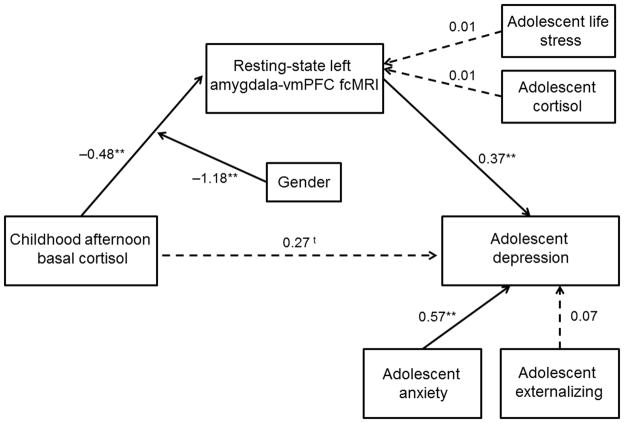Figure 5.
Structural equation model examining the moderating effect of gender on the mediation through amygdala-vmPFC fcMRI of the relation between childhood afternoon cortisol and adolescent depression. The SEM model demonstrated good fit: Chi2 = 7.56, p > 0.05; RMSEA = 0.07; SRMR = 0.03; CFI = 0.97. Paths are marked with unstandardized coefficients. There was a marginally-significant direct effect of childhood cortisol on adolescent depressive symptoms, and the mediating effect of adolescent amygdala-vmPFC fcMRI was significant (Indirect Est. = −0.18, p = 0.02). In both male sand females, increased amygdala-vmPFC functional connectivity predicted increased depressive symptoms. For females, a developmental pathway between childhood cortisol and adolescent depressive symptoms operates partially through an inverse association with adolescent amygdala-vmPFC fcMRI. t p = 0.07, * p < 0.05, ** p < 0.01

